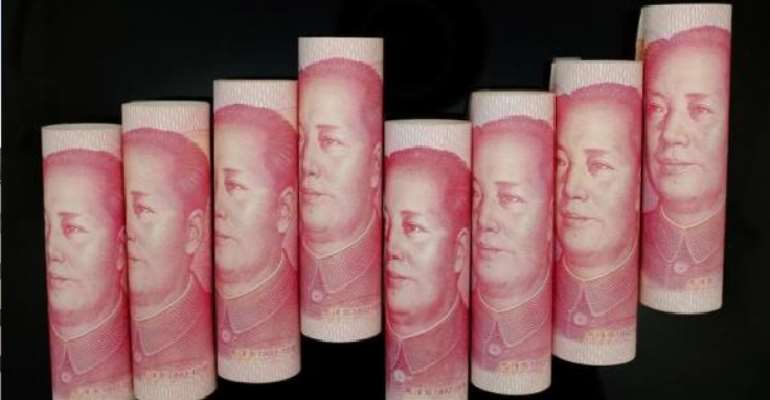China June Bank Loans Beat Expectations As Beijing Steps On The Gas

Beijing stepped up efforts to re-energise China's economy in June and avert a sharper slowdown, pumping more money into the system and pressing banks to extend more loans, but analysts say more stimulus will be needed to ensure a sustained recovery.
Data over the last week offered some signs that the world's second-largest economy steadied in the second quarter as a raft of government stimulus measures kicked in, though exports remained sluggish, putting greater pressure on Beijing to stoke domestic demand.
A cooling property market also points to continued risks in the second half and could well determine the scope and extent of further policy easing, after Premier Li Keqiang vowed recently that the economy would grow by at least the targeted 7.5 percent rate this year.
Chinese banks, which are used by Beijing as a policy tool, made a much stronger-than expected 1.08 trillion yuan ($173.9 billion) of new yuan loans in June, nearly 20 percent more than market expectations, data on Tuesday showed.
Broad M2 money supply jumped 14.7 percent last month from a year earlier – the highest in 10 months, the People's Bank of China said in a statement on its website, also higher than a forecast of 13.5 percent in a Reuters poll of economists.
“While a fall in short-term lending rates hinted at a higher supply of funds during the month, the money swirling in the market reflects the urgency of the authorities to ramp up economic activity,” said Chester Liaw, an economist at Forecast Pte in Singapore.
Outstanding yuan loans grew 14 percent from a year ago, slightly better than expectations, while the total social financing aggregate, a broad measure of liquidity in the economy, swelled to 1.97 trillion yuan in June from 1.4 trillion yuan the month before.
“We had previously expected aggregate financing to come in much higher, but still the 1.97 trillion yuan printed as a major upside surprise,” Liaw said.
The central bank has pledged to keep credit and money supply growth at a reasonable level to meet the needs of the real economy. It aims for a 13 percent annual rise in M2 this year.
The strong growth in money supply in June “is an explicit loosening of (monetary) conditions. Some of this is seasonal. At the end of the quarter there was demand for cash. And evidently, the authorities supplied it,” said Tim Condon, economist at ING Bank in Singapore.
But other economists were more cautious.
“We believe that June's rebound in credit growth has more to do with a weak base for comparison due to the cash crunch last year than with the current policy stance,” Julian Evans-Pritchard, China economist at Capital Economics, said in a note.
UPBEAT ON EXPORT OUTLOOK
After a shaky start to the year, China's economy has recently shown signs of turning the corner thanks to a series of government stimulus measures, including reserve requirement cuts for some banks and more spending on railways and public housing.
Government spending surged 26.1 percent in June from a year earlier to 1.65 trillion yuan, further reflecting Beijing's determination to revive growth momentum.
However, many economists stress that the rebound looks patchy and believe more policy support may still be needed to counter the broader economic downdraft from the slowing property sector.
China's Commerce Ministry said on Tuesday that export growth should show marked improvement in the second-half of the year compared to the first six months, making it likely that China will achieve its 7.5 percent trade growth target for 2014.
'Our surveys on exporters showed that export firms are showing confidence on trade growth. Therefore, we expect both export and import growth will improve remarkably in the second half than that in the first half,” Shen Danyang, ministry spokesman told reporters at the monthly briefing: “If stripping off last year's high base effect of abnormal trade growth, I think we are able to achieve the 7.5 percent annual trade growth target in 2014 through efforts.”
China's trade performance improved in June but still missed market forecasts, while cooler-than-expect inflation readings pointed to lingering sluggishness in the economy.
China's foreign direct investment inflows rose at an annual pace of 2.2 percent in the first six months and were up only modestly for June, reflecting investors' cautiousness over the economic outlook.
The government is due to release second-quarter GDP growth on Wednesday, along with data on fixed-asset investment for the first half and factory output and retail sales for June.
Economists polled by Reuters expected annual GDP growth of 7.4 percent in the second quarter, matching the 18-month low in the first quarter, though Premier Li said last week that growth had improved in April-June.
REUTERS
